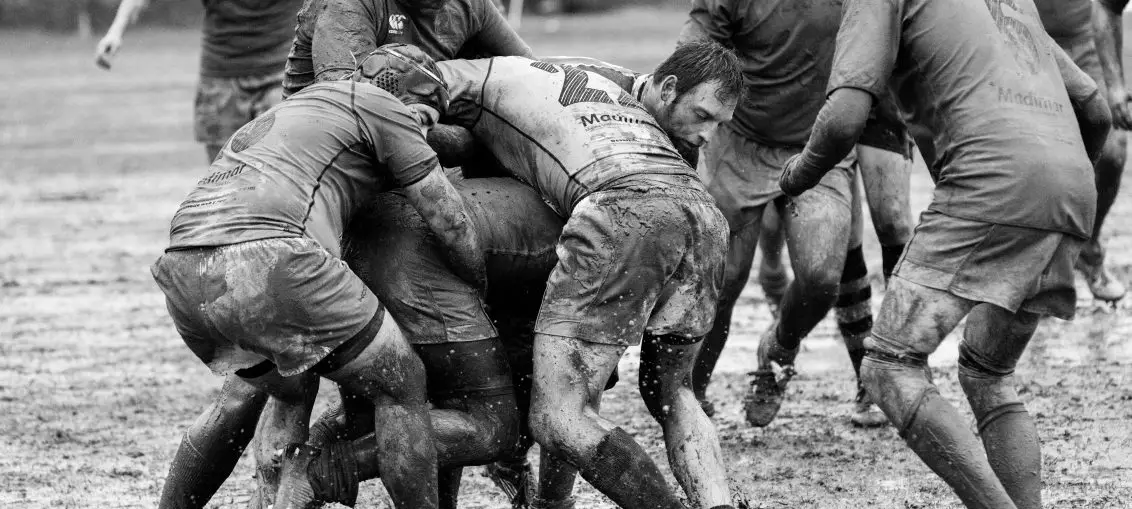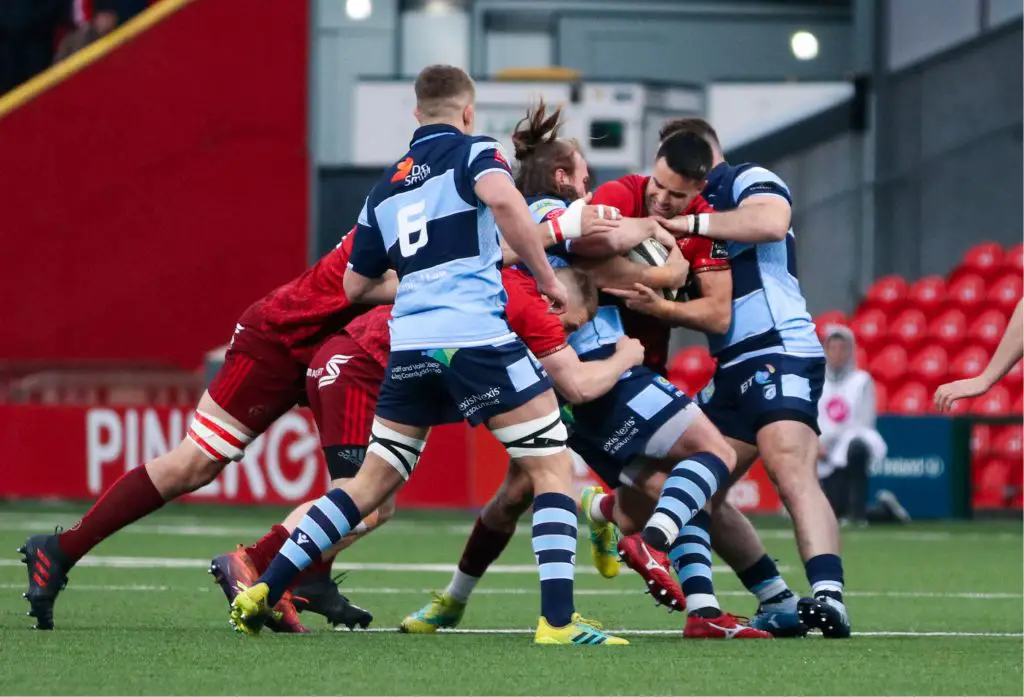
Have you heard the term ‘maul’ in rugby, but aren’t sure exactly what it means? Don’t worry, we’ve got you covered. We’ll explain what a maul is and all the rules that govern a rugby maul.
What is a maul in rugby?
A maul is a phase of play within rugby where one or more players from each team are in physical contact close around the ball. Unlike a ruck, a maul is formed off the ground, with participating players standing on their feet.
The tackled player should try and go to ground and place the ball immediately, if they cannot do so then a maul is formed. A maul occurs when a player in possession of the ball is held up off the ground by one or more of the opposition and one or more of the ball carrier’s teammates.
What happens when a maul is formed?
Once a maul is formed, it is essential for the team in possession of the ball to drive towards the goal line. Otherwise a scrum will be awarded to the opposition. Having gained territory, the ball can be passed backwards by players involved in the maul. Eventually a player at the back of the maul can either run with the ball or pass it to a player not involved within the phase.

Why start a maul?
A maul is often seen following a lineout and can be used to gain territory or field position. A maul is also used to create open space through attracting defenders to prevent the onward drive. Similar to a ruck, there are many rules that players involved need to adhere to. The same rules regarding joining a ruck are also applicable to joining a maul.
Players must join from behind in the offside line (the backmost player on their team) and must not be bound to another player as they do so. During a maul, players must also maintain a body position that sees their head and shoulders no lower than their hips.
When does the maul end?
A maul only ends via the ball leaving the maul and the ball being on the floor, or if the referee awards a penalty to either team. The team in possession of the ball deem a maul successful if they maintain possession of the ball. However, the opposition can win the ball through various tactical strategies. Through counteracting the drive, the opposition will be awarded a penalty if the ball is stationary for five seconds.
What are the rules for a maul?
During a maul, all players involved must stay on their feet and must be bound to it as opposed to loitering around the fringes. Players cannot drag other players out of a maul or intentionally collapse it in order to prevent the forward movement, a penalty would be awarded to punish this.
Players can leave the maul on their own accord. However, if they wish to rejoin they must do so via the back-most point of their own team. A joining player must bind to the front most player of the opposition if there none of their teammate are already involved in the maul.
Law 16 of the Rugby Union Laws of the Game defines the rugby maul.
Wrapping up
In conclusion, the rugby maul is a unique and effective way for a team to advance the ball down the field. It is a tightly contested battle between two sets of players, with each team looking to gain the upper hand and drive the maul forward.
The rules and tactics involved in the maul can be complex, but with practice and understanding, teams can use this technique to their advantage. By staying legal, working together, and being patient, a team can turn a maul into a powerful weapon that can lead to points on the scoreboard.
